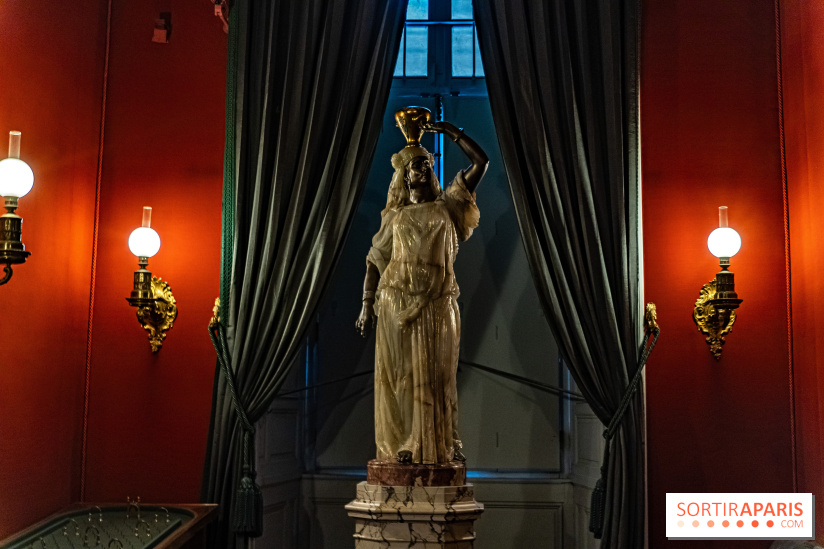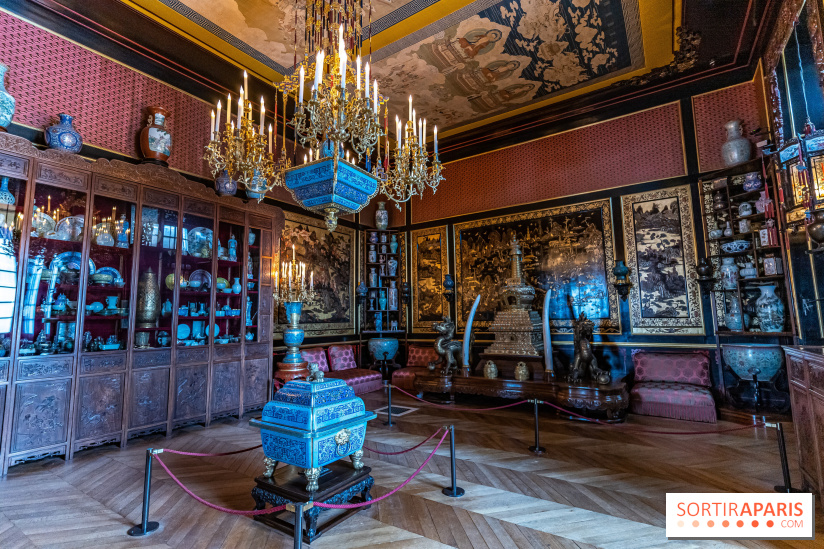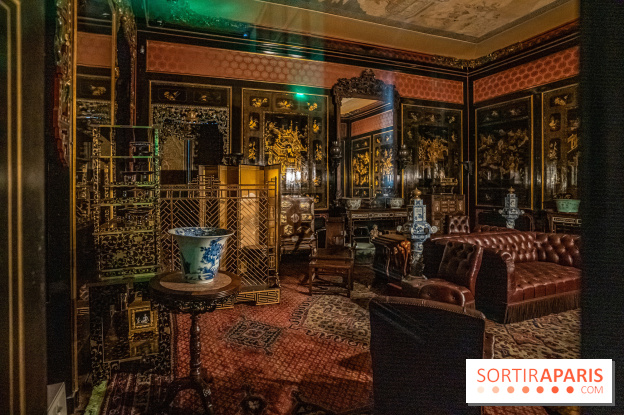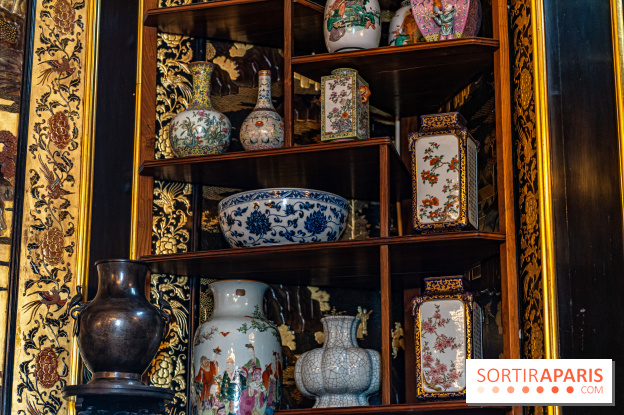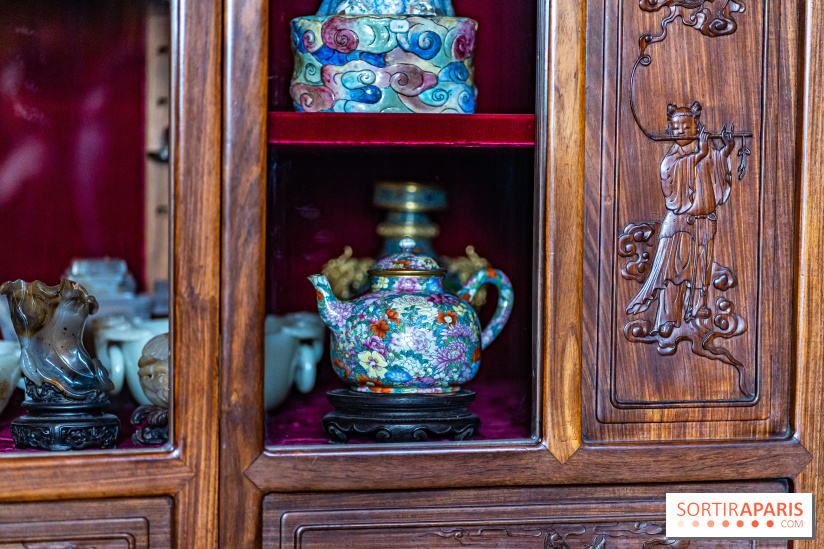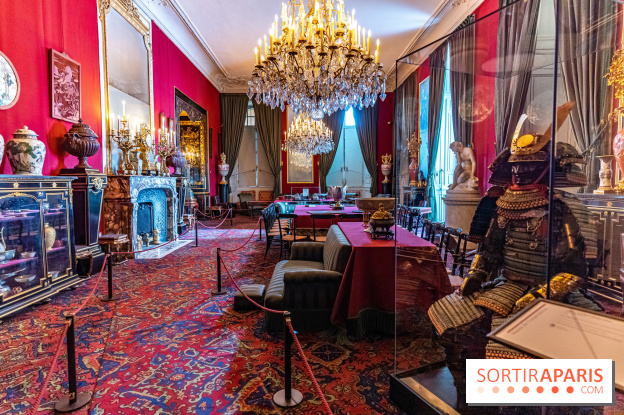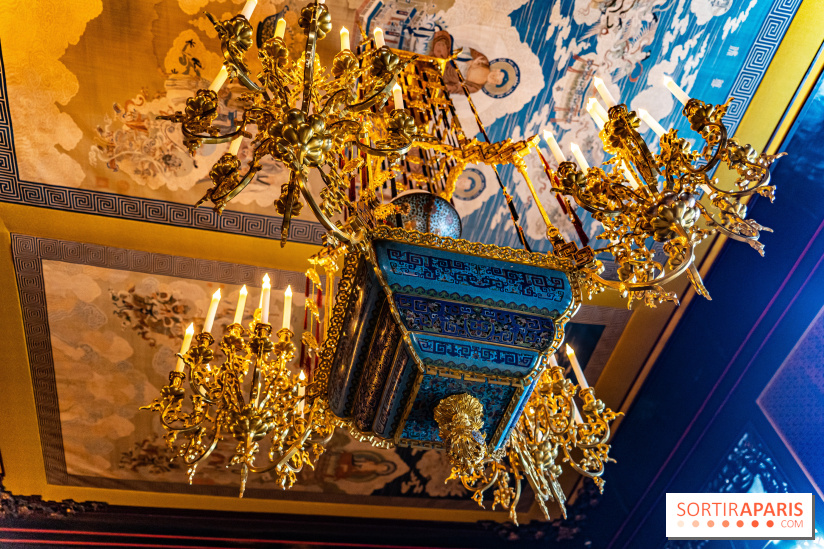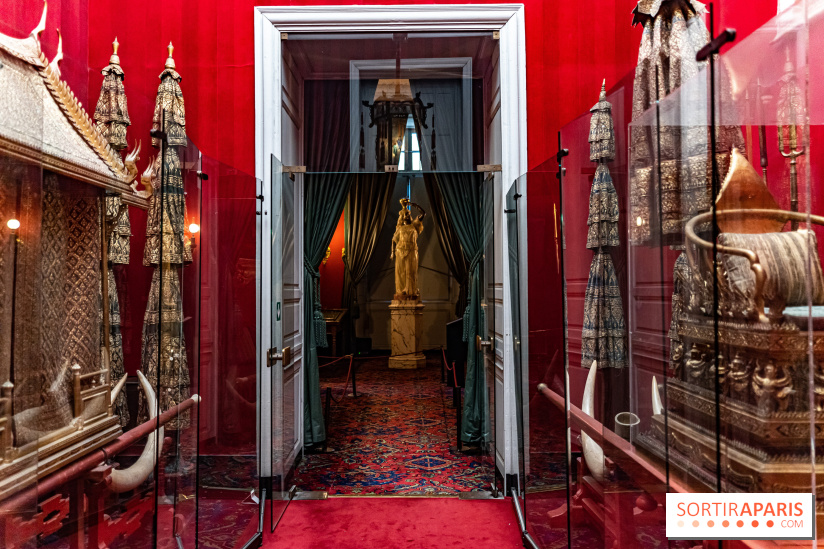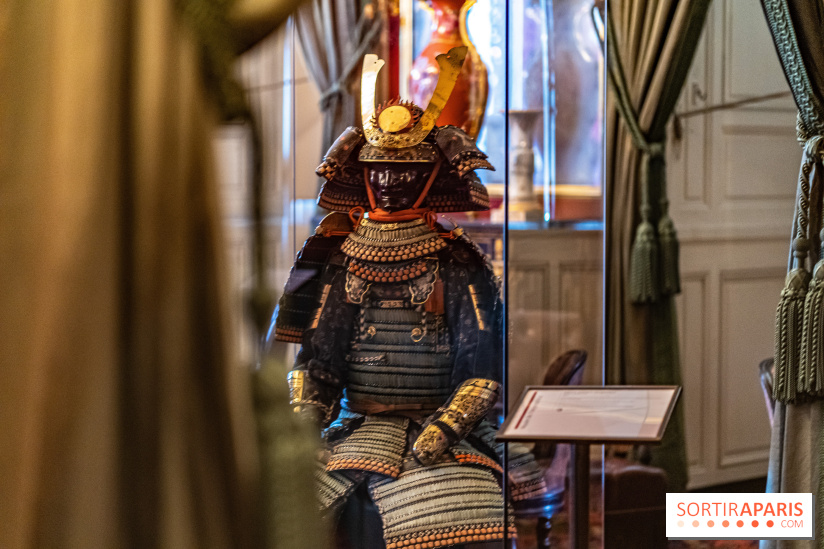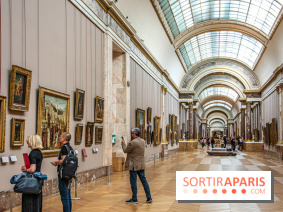The Musée Chinois at the Château de Fontainebleau, located in the Gros Pavillon, was set up byEmpress Eugénie in 1863, and features collections of art objects and furniture from the Far East, reflecting the eclectic tastes of 19th-century collectors. The 800 or so objects on display, three hundred of which come from the Sack of the Summer Palace in Peking in 1860, originate from China, Japan, Cambodia and Korea. There's also a billiard table and a piano, as this was where the empress liked to entertain and work.
The salons and the Chinese museum were designed for relaxation and intimate evenings at court. The ensemble forms a unique and astonishing scenography, consecrating this " Chinese museum " as the last cabinet of curiosities in the history of the château.
The priceless collection can also be discovered in augmented reality using a touch-sensitive tablet. The HistoPad offers an interactive exploration of the collections on display and the objects that have disappeared, as well as a recontextualization of the major pieces in their original setting in the Peking Summer Palace. It also offers a virtual tour of the salon des Laques de l'Impératrice Eugénie.
The collection as a whole bears witness to the taste for the exotic and the Orient that was so prevalent in the 19th century. It includes porcelain, jade and Buddhist liturgical objects, as well as diplomatic gifts from the Siamese embassy, received in 1861 by the Emperor and Empress in the Ballroom at Fontainebleau.
The Musée Chinois is adjoined by a salon in which Eugenie gathered an intimate society of entertainers, creating a unique and astonishing scenography. Eugenie herself oversaw the installation of the lacquer and gold decor, the silk canvases stretched across the ceiling, the precious trinkets set in custom-made shelves, the consoles, the vases mounted as lamps...
The Musée Chinois at the Château de Fontainebleau is also open to visitors on a guided tour of " Napoléon III and Eugénie at Fontainebleau ", with the theme"Splendors and backstage". Come and discover the spaces, from the most intimate to the most theatrical, that made Fontainebleau famous during the Second Empire.
Empress Eugenie, in exile in England three years after the death of Emperor Napoleon III, had expressed the wish to recover her personal possessions, in particular the collection of the Musée Chinois de Fontainebleau. This had been built up from objects seized by the French military during the sack of the Summer Palace in Peking in October 1860, as well as gifts offered by the Siamese embassy in June 1861. The Empress herself had seen to the installation of the lacquer and gold decor, the silk canvases stretched across the ceiling, the precious trinkets set in custom-made shelves, the consoles and the vases mounted as lamps.
During the liquidation of the Emperor's civil list, discussions took place between representatives of the state and members of the imperial family. The idea of returning to the former Empress the collection of objects removed from the Summer Palace in Peking was raised. After lengthy discussions and visits to Fontainebleau, it was decided by majority vote that the 418 pieces appraised and listed in the catalog, whatever their provenance, would become state property.
After a century's slumber, the Musée Chinois de Fontainebleau has been restored to its former beauty. It bears witness to some of the thousand wonders of the Château de Fontainebleau. Among these wonders is a contemporary Japanese samurai warrior's suit of armor, offered by the Ikeda Nagoki embassy in 1864 to Emperor Napoleon III. The Japanese administration had taken note of the Emperor's particular taste for antique armor and had chosen a contemporary suit of armor in keeping with the fashion for "retro" armor. This armor arrived in Fontainebleau around 1865 and was installed in the Chinese Museum. For over a century, it had been displayed on a wooden mannequin which had the peculiarity of bearing the head of a Western mannequin, thus altering its original presentation.
In the 1970s, when the museum was restored to its Second Empire state, the Japanese armor was put into storage. But thanks to recent restorations, it has been returned to the Musée Chinois de Fontainebleau, and visitors can now admire this magnificent contemporary suit of Japanese warrior armor, testimony to the friendship and diplomatic exchanges between France and Japan in the 19th century.
Dates and Opening Time
From February 19th, 2023 to December 31th, 2027
Location
Château de Fontainebleau
77300 Fontainebleau
77300 Fontainebleau
Recommended age
For all
